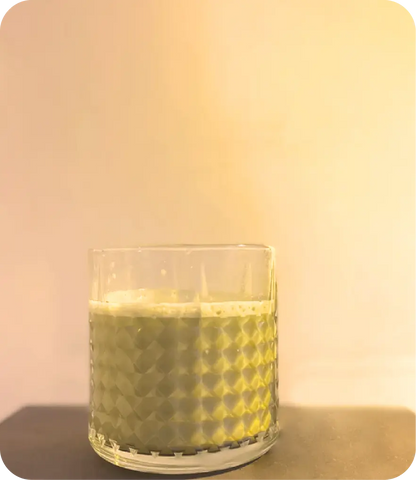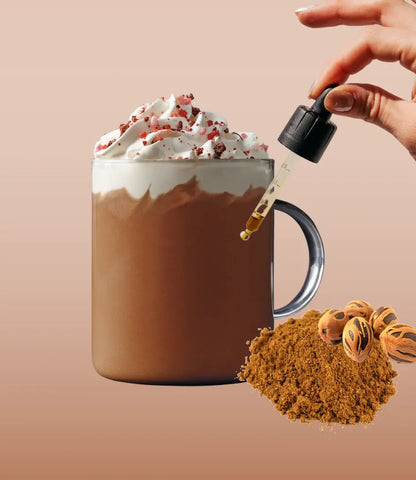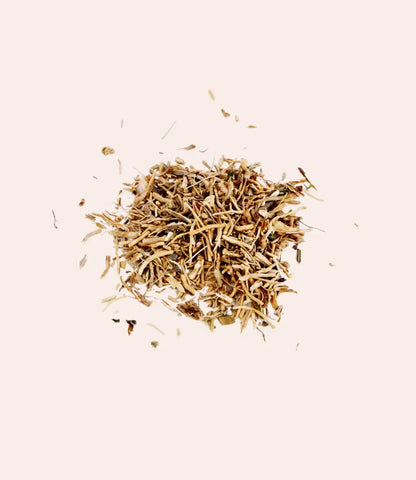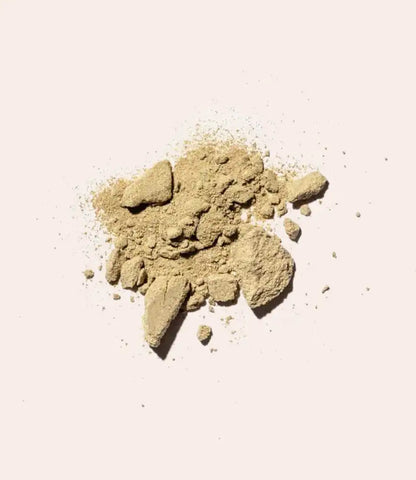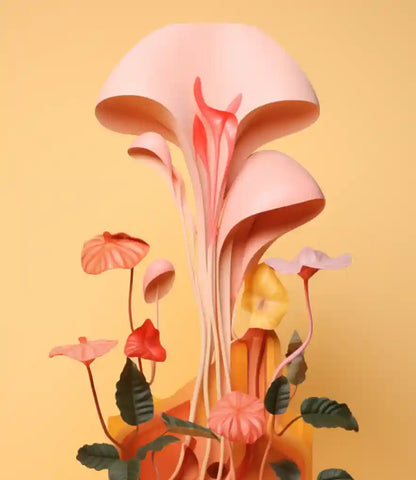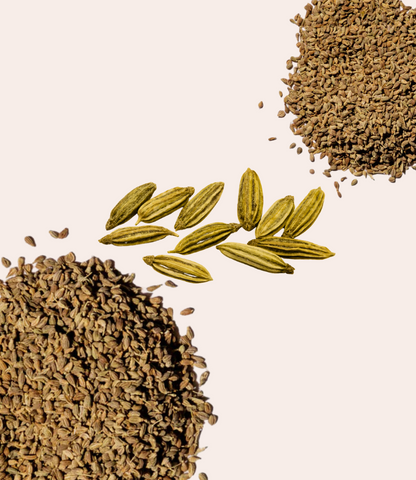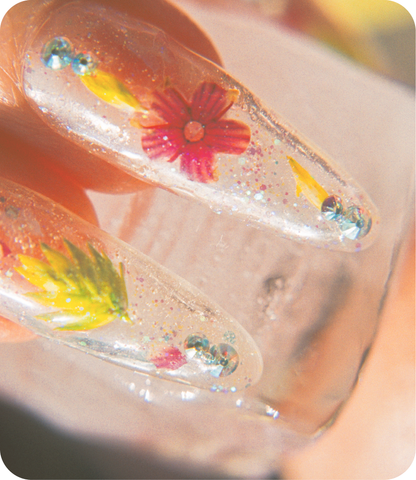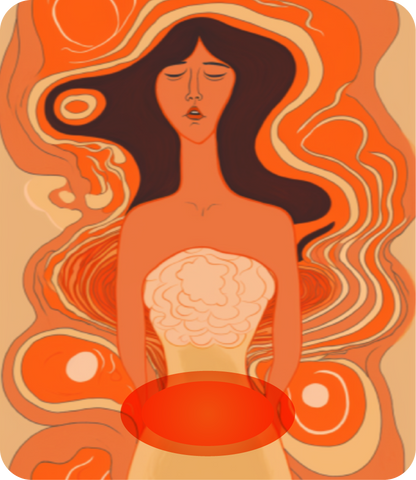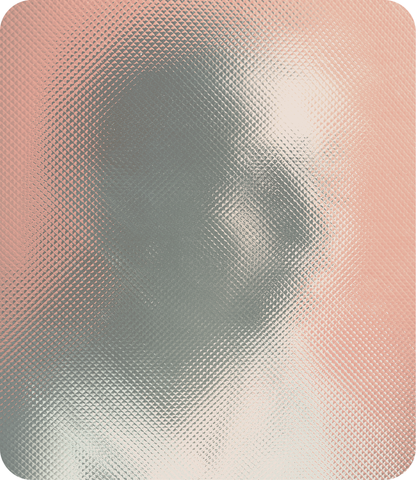Hot Flashes? Here’s everything you need to know
As people with wombs, our lives are marked by transformative stages, and one of the most significant transitions is the journey through perimenopause and menopause.
This natural phase of life, typically occurring in the late 40s or early 50s, is characterized by various hormonal fluctuations that lead to a range of physical and emotional changes.
Among the most common and often challenging symptoms experienced during this time are hot flashes. These sudden sensations of intense heat, accompanied by rapid heartbeat and sweating, can leave us feeling uncomfortable and disrupted. However, they are also a reminder of the incredible transformations taking place within our bodies.
Understanding the physiological basis of hot flashes can provide valuable insights into how to manage and cope with these episodes effectively. Moreover, we will discuss practical lifestyle adjustments, dietary changes, and self-care strategies that can help alleviate the frequency and intensity of hot flashes, empowering people to embrace this transitional phase with confidence and grace.
Amidst the challenges that accompany hot flashes, it’s essential to recognize that perimenopause and menopause signify a time of empowerment and liberation for many of us. It marks the end of fertility, but it also marks the beginning of a new chapter in life, where we can embrace our wisdom and newfound freedom.
What are hot flashes?
Hot flashes are complex phenomena that affect as many as 75% of those going through perimenopause and menopause.
At the core of hot flashes is the decline in estrogen levels, a key hormone produced by the ovaries, as we approach menopause. Estrogen plays a critical role in regulating the body’s temperature and maintaining thermoregulation. As its levels fluctuate, particularly during perimenopause, the hypothalamus, the part of the brain responsible for temperature regulation, becomes more sensitive to minor changes in estrogen levels.
This increased sensitivity leads to a disruption in the hypothalamus’ ability to regulate body temperature effectively. As a result, the hypothalamus may interpret even small changes in estrogen as significant shifts in body temperature, triggering the body’s cooling response. This response includes the dilation of blood vessels and increased sweating, aimed at dissipating heat and lowering body temperature.
The sudden dilation of blood vessels near the skin’s surface and the release of sweat can create an intense feeling of heat, often accompanied by a rapid heartbeat and flushing of the skin. While hot flashes primarily affect the upper body, such as the face, neck, and chest, some women may also experience a sudden feeling of warmth throughout their entire body.
It is essential to note that hot flashes’ frequency, intensity, and duration can vary widely among each person, making the experience unique to each individual. Factors such as genetics, lifestyle, overall health, and body mass index (BMI) can also influence how people experience hot flashes.
Duration
The duration of hot flashes can vary significantly among each individual and is influenced by various factors. Hot flashes can occur during the perimenopause phase leading up to menopause and may continue for some time after menopause has occurred. Here are some key points to consider regarding the duration of hot flashes:
- Perimenopause: Hot flashes can start during perimenopause, which is the transitional period leading up to menopause. Perimenopause can begin in a person’s early 40s or even earlier, and during this time, hormonal fluctuations become more noticeable, leading to the onset of hot flashes in some of us.
- Menopause: Menopause is officially confirmed when we have not had a menstrual period for 12 consecutive months. Hot flashes are typically most prevalent during this time, as the hormonal changes and decline in estrogen levels are at their peak.
- Post-Menopause: After menopause, hot flashes may continue for some, but their frequency and intensity decrease over time as the hypothalamus adjusts to the new baseline of estrogen. The duration of post-menopausal hot flashes can vary from a few months to several years and seems to be influenced by a persons’ percentage of fat. The fat in our body converts testosterone into estrogen so the leaner a person is, the even lower levels of estrogen that they will have.
It’s important to remember that every person’s experience with hot flashes is unique. If you are going through perimenopause or menopause and experiencing hot flashes, it is essential to consult with a healthcare professional for personalized advice and support. They can provide guidance on managing symptoms and discuss potential treatment options if necessary.
Not menopausal hot flashes
While menopause is the most common cause of hot flashes in people with wombs, it is not the only factor that can trigger them. Hot flashes can result from various underlying causes, and understanding these factors is crucial in accurately diagnosing and managing the symptoms.
- Hormonal Imbalances: Hot flashes can also occur due to hormonal imbalances unrelated to menopause. Conditions such as hyperthyroidism (overactive thyroid) or adrenal gland disorders can cause hormonal fluctuations that trigger hot flashes.
- Medications: Some medications, particularly hormonal treatments like hormone replacement therapy (HRT) or certain cancer treatments, can induce hot flashes as a side effect.
- Stress and Anxiety: Emotional factors like stress, anxiety, and strong emotions can influence the hypothalamus, leading to temperature dysregulation and hot flashes.
- Lifestyle and Environmental Factors: Certain lifestyle habits, such as excessive alcohol consumption, smoking, caffeine intake, or consuming spicy foods, can act as triggers for hot flashes. Additionally, exposure to hot environments or overheating during exercise can also induce these episodes.
- Medical Conditions: Certain medical conditions, such as diabetes or neurological disorders, can affect the body's temperature regulation and contribute to hot flashes.
- Surgical Menopause: Women who undergo surgical removal of their ovaries (oophorectomy) may experience abrupt menopause and hot flashes due to the sudden drop in hormone levels.
- Genetics: Family history and genetic predisposition can play a role in the frequency and intensity of hot flashes.
It is essential to consider all potential causes when diagnosing and providing support to individuals experiencing hot flashes, as each case may require a personalized approach to address the underlying factors effectively.
Related to: How to Have Hormone Therapy with a Holistic Perspective
How to manage hot flashes
While there is no treatment to cure perimenopause and menopause hot flashes, there are some things you can try to manage them.
Making certain lifestyle changes can help manage hot flashes. The following are some ideas of things that can help:
- Clothing: Firstly, dress in lightweight, breathable fabrics and in layers, so you can easily remove clothing when a hot flash strikes. Maintain a comfortable room temperature and use fans or air conditioning if needed.
- Exercise: Regular exercise, such as brisk walking or yoga, can reduce hot flash frequency and improve overall well-being.
- Food: Avoid known triggers like spicy foods, caffeine, alcohol, and smoking, which can exacerbate symptoms. Incorporating soy-based foods like tofu, soy milk, and edamame into your diet can be beneficial, as they contain phytoestrogens called isoflavones, which can help alleviate hot flashes. Another food item that might help are flaxseeds. Flaxseeds are rich in lignans, which have estrogen-like properties and may help regulate hormonal fluctuations, potentially reducing the frequency and intensity of hot flashes.
- Stress: It is important to prioritize reducing levels of stress. While stress itself may not directly cause hot flashes, it can exacerbate existing menopausal symptoms and contribute to their severity and frequency. Stress is related to hot flashes as it activates the sympathetic nervous system, often referred to as the "fight or flight" response. This system can cause blood vessels to constrict and the heart rate to increase, leading to an abrupt rise in body temperature and a higher likelihood of triggering hot flashes if you are already prone to them.
- Supplements: Incorporating herbal supplements, such as black cohosh and sage, may help alleviate hot flashes for some individuals during menopause. These supplements contain phytoestrogens, which mimic estrogen's effects in the body and may help balance hormone fluctuations, reducing the frequency and severity of hot flashes. We have found our Moon-a-pause product, for example, to be a phenomenal way of helping reduce the intensity of hot flashes. However, it's essential to consult with a healthcare provider before trying any herbal remedies or supplements, as they may interact with other medications or have potential side effects.
For those experiencing severe hot flashes that significantly impact their quality of life, hormone therapy may be considered. Hormone therapy involves the use of estrogen or a combination of estrogen and progestin to supplement declining hormone levels during menopause. However, hormone therapy is not suitable for everyone, and its risks and benefits should be carefully evaluated by a healthcare provider based on an individual's medical history and health status.
Remember that managing hot flashes is a gradual process, and what works for one may not work for another. It's essential to find a combination of strategies that suit your needs and consult with a healthcare professional for personalized guidance and support during this transitional phase of life. Together, with patience and understanding, you can navigate through hot flashes and embrace this transformative journey with greater ease and comfort.
Sources
(n.d.). Menopause. World Health Organization. https://www.who.int/news-room/fact-sheets/detail/menopause
(n.d.). Research explores the impact of menopause on women’s health and aging. National Institute on Aging. https://www.nia.nih.gov/news/research-explores-impact-menopause-womens-health-and-aging
(n.d.). Menopause FAQS: Hot Flashes. The North American Menopause Society. https://www.menopause.org/for-women/menopause-faqs-hot-flashes
(n.d.). Everything You Need to Know About Menopausal Hot Flashes. Everyday Health. https://www.everydayhealth.com/menopause/everything-you-need-to-know-about-menopausal-hot-flashes/?slot=0&eh_uid=87415595&xid=nl_EHNLwomenshealth_2023-07-19_32125159&utm_source=Newsletters&nl_key=nl_womens_health&utm_medium=email&utm_content=2023-07-19&utm_campaign=Womens_Health&utm_term=creativeA&zdee=gAAAAABkptAV6LrSM3hwBQWgSh1YoAMz5x3KYslSIIdiE_Fof-P_Nvq6Lh-gtMH-tTnda7Zol-Kv8g8--WsWyXecvYY1lsiNEYQ98__HR7RbmtJ8dTcP3RY%3D











